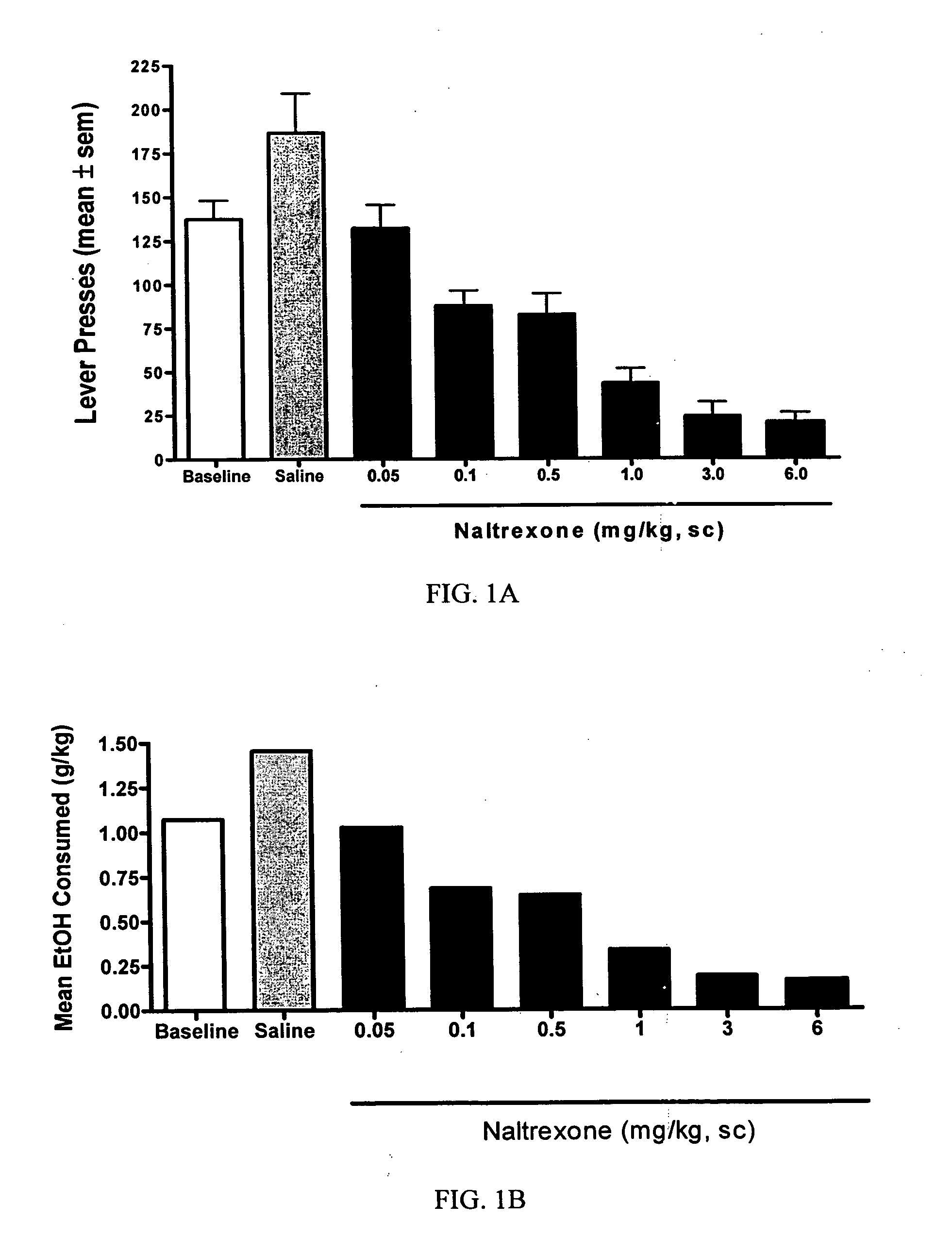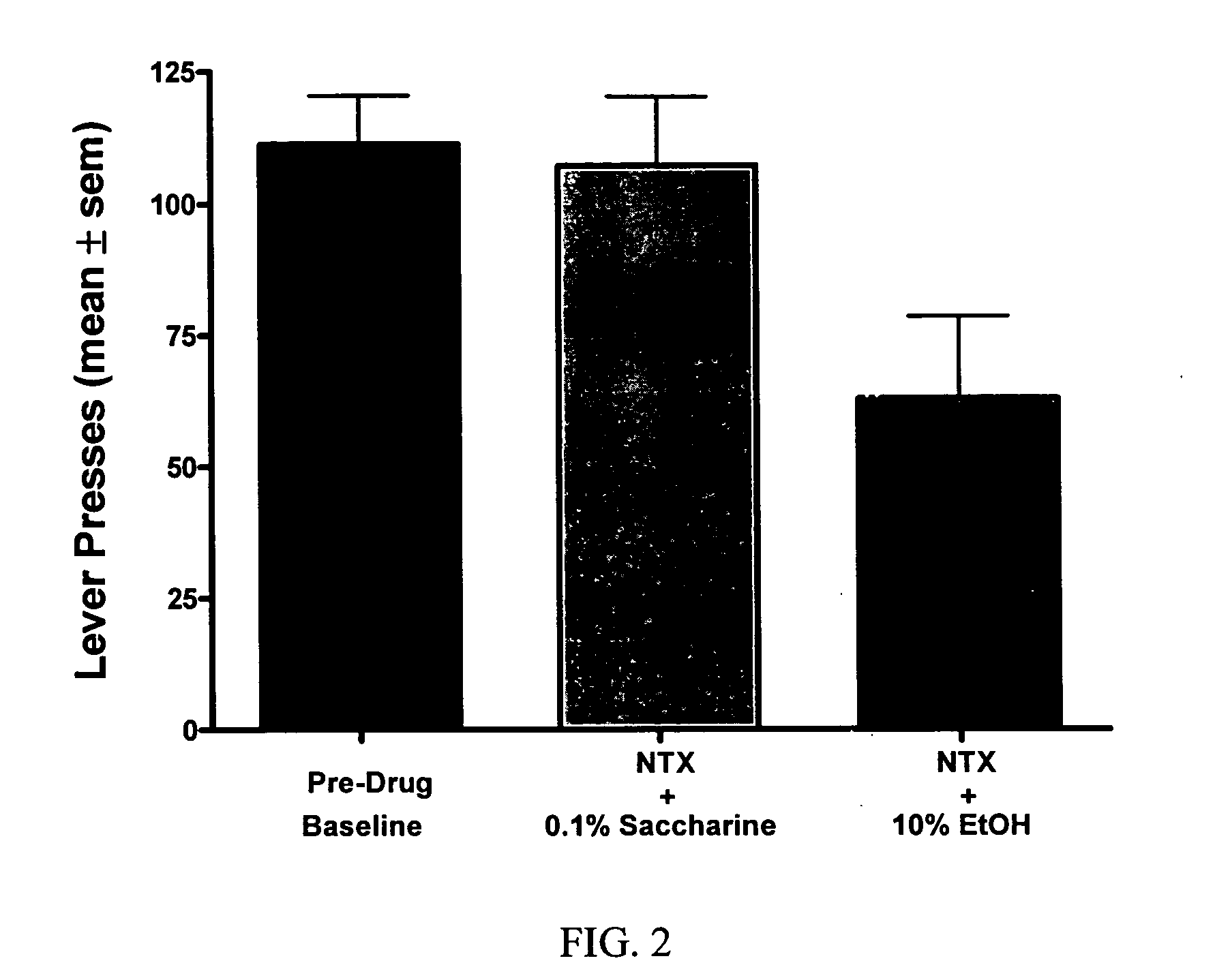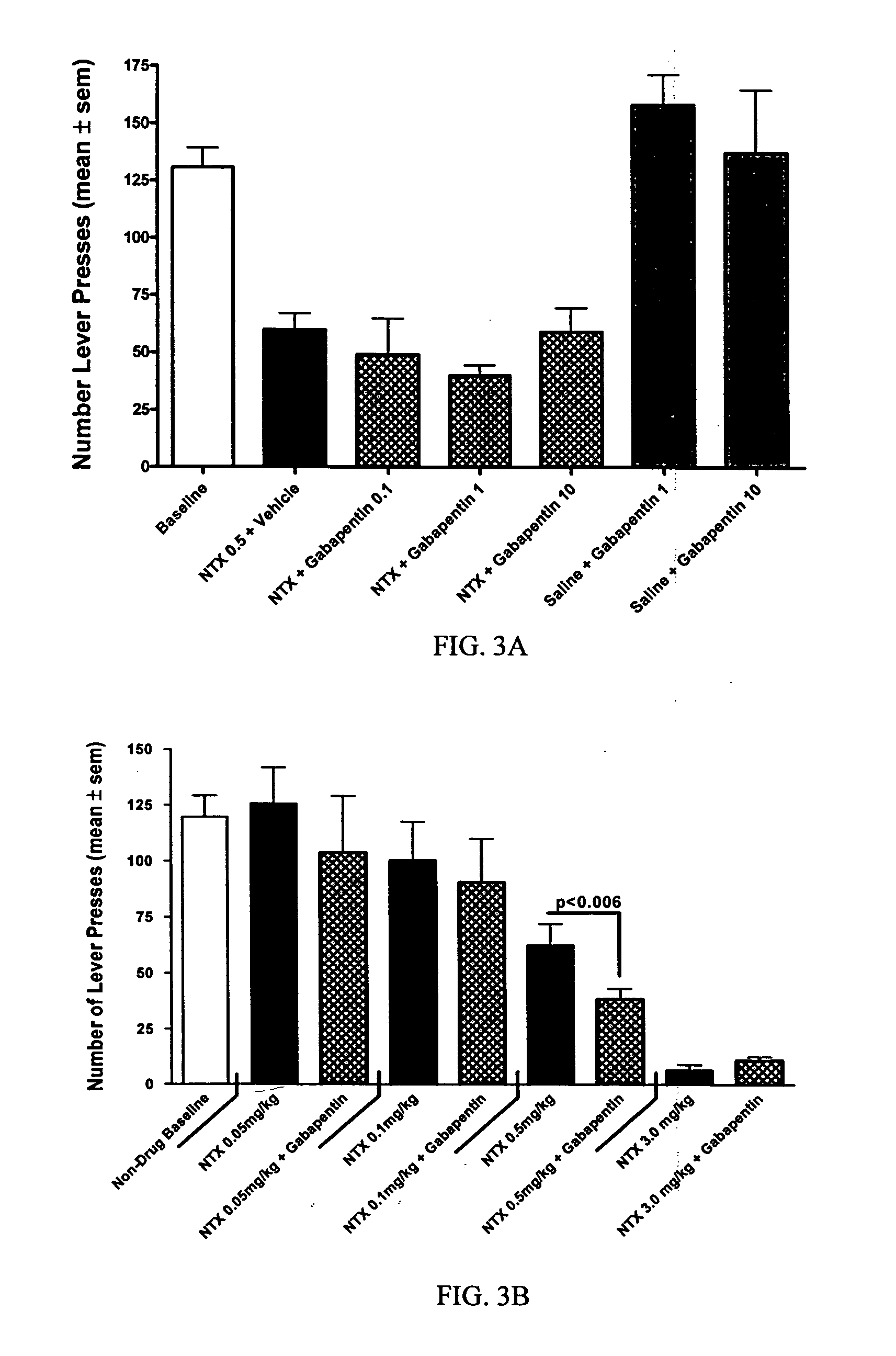Methods for treating alcoholism
- Summary
- Abstract
- Description
- Claims
- Application Information
AI Technical Summary
Benefits of technology
Problems solved by technology
Method used
Image
Examples
example 1
[0047] The objective of this study was to determine whether naltrexone's ability to decrease alcohol consumption is affected when combined with an anticonvulsant. The model used for this study was a rat model of alcohol self-administration.
Methods:
Animals
[0048] Male Wistar rats (starting weight of 200±30 grams; Charles River Laboratories, MA) were individually housed with free access to food and water. The vivarium was maintained within the temperature and relative humidity range specified within the Guide for Care and Use of Laboratory Animals (NIH Publication No. 86-23, revised 1985). These conditions were recorded once daily throughout the study. The vivarium was on a 12 hour light / dark schedule. All animal studies were reviewed and approved by the Alkermes' IACUC (protocol #04-2A).
Ethanol Self Administration Training Procedure
[0049] Animals were trained daily in an operant chamber to press a lever to receive access to an ethanol cocktail as a reinforcer using a saccharin...
example 2
[0062] An anticonvulsant, carbamazepine, was studied in a mouse model of alcohol withdrawal. Possible interactions with carbamazepine's ability to reduce convulsions when combined with naltrexone were also studied.
Methods:
Animals
[0063] Male C57BL / 6 mice (15-18 grams; Charles River Laboratories, MA) were housed in groups of 4 on a ventilated rack with free access to food and water. The vivarium was maintained within the temperature and relative humidity range specified within the Guide for Care and Use of Laboratory Animals (NIH Publication No. 86-23, revised 1985). These conditions were recorded once daily throughout the study. The vivarium was on a 12 hour light / dark schedule. All animal studies were reviewed and approved by the Alkermes' IACUC (protocol #04-8A).
Alcohol Administration for the Induction of Alcohol Withdrawal Symptoms
[0064] Persistent high alcohol levels in blood and brain are required to develop withdrawal symptoms following termination of alcohol availabili...
example 3
[0072] The objective of this study is to determine whether opioid antagonists in combination with anticonvulsants increase the compliance as a treatment regime compared to treatment using the opioid antagonist alone. This endpoint of increased compliance is significant whether or not the treatment regime itself is successful, that is decreasing or eliminating alcohol consumption. It is important for the treating physician to know whether treatment failed because of “non-compliance” versus lack of responsiveness to the drug of choice or the dose of that drug, for example.
[0073] Patients are observed initially in an in-patient setting of a hospital (for detoxification) and a community clinic (for follow-up). Alcoholics seeking withdrawal are selected for the study. Enrollment is conducted as follows: Enrollment criteria is current dependence and wish to transfer to naltrexone maintenance. Exclusion criteria include serious psychiatric problems, serious medical problems, especially ac...
PUM
| Property | Measurement | Unit |
|---|---|---|
| Dimensionless property | aaaaa | aaaaa |
| Dimensionless property | aaaaa | aaaaa |
| Dimensionless property | aaaaa | aaaaa |
Abstract
Description
Claims
Application Information
 Login to View More
Login to View More - R&D
- Intellectual Property
- Life Sciences
- Materials
- Tech Scout
- Unparalleled Data Quality
- Higher Quality Content
- 60% Fewer Hallucinations
Browse by: Latest US Patents, China's latest patents, Technical Efficacy Thesaurus, Application Domain, Technology Topic, Popular Technical Reports.
© 2025 PatSnap. All rights reserved.Legal|Privacy policy|Modern Slavery Act Transparency Statement|Sitemap|About US| Contact US: help@patsnap.com



